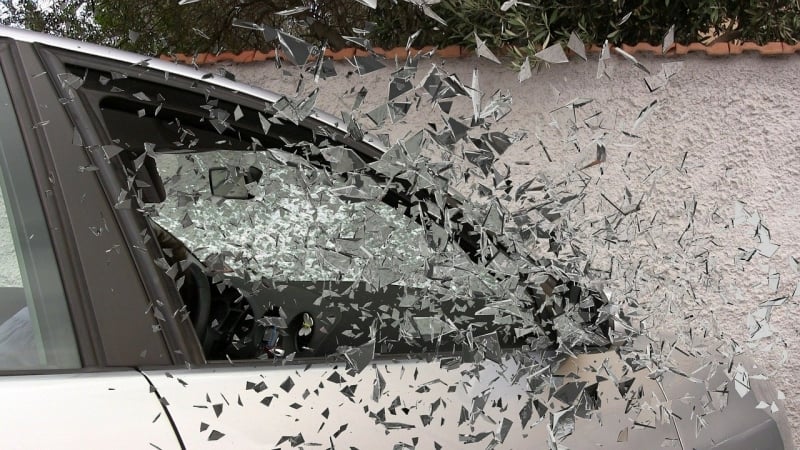Regulation 3 of the European Communities (Rights Against Insurers) Regulations 2002, an exception.

Regulation 3 of the European Communities (Rights Against Insurers) Regulations 2002 (‘the regulations’) creates a direct cause of action against insurers following car accidents. There are some exceptions to this including when the negligent driver was not insured on the vehicle.
This article will discuss whether regulation 3 of the regulations can be used when the driver was insured at the time of the accident, but indemnity has since been revoked due to a post-accident breach of the insurance policy. It will do this with reference to the case of Ashraf and Ashraf v Royal &. Sun Alliance Insurance Plc heard in Bradford County Court before DJ Hickinbottom.
The claim arose out of a road traffic accident in February 2018, the claim was brought against the insurance company directly pursuant to regulation 3 of the regulations. The Defendant accepted that they had issued a policy of insurance which was valid at the time of the accident. However, the insured had not been co-operating after the accident with the insurance company, so they had withdrawn indemnity 7 months before proceedings were issued. The Defendant informed the Claimant of the withdrawn indemnity.
Mr Quickfall, counsel at Parklane Plowden, on behalf of the Defendant, made an application, in the face of the court, to strike out the claim. It was the Defendant’s submission that the removal of indemnity post-accident prevented the Claimant from relying on the regulations.
Regulation 3(2) of the regulations states “that insurers shall be directly liable to the entitled party to the extent that he is liable to the insured person”. This meant that in determining whether the regulations could be relied on, the issue was liability to the insured. It was the Defendant’s position that they did not owe any liability to their former insured due to the withdrawal of indemnity.
In Section 151(9)(c) Road Traffic Act 1988 the legislature sought to differentiate between liability covered by a policy and liability which would have been covered had the policy not been cancelled. It was therefore argued by the Defendant that Section 151(9)(c) Road Traffic Act 1988 makes clear that once an insurer has cancelled the policy, they no longer owe any liability to the insured. Furthermore, it was submitted that Section 151(5) Road Traffic Act 1988 permits the cancelling of policies in its wording.
Mr Quickfall sought to rely on the case of Hang v Grand Union Motor Insurance Co. Ltd [1989] 1 WLR 895. This judgment recognised that the Hong Kong equivalent to Section 148(5) Road Traffic Act 1988 did not prevent an insurer from cancelling a policy for a post-accident breach. It was specifically found that it could not have been the intention of the legislature for the breaches to have no effect in relation to liabilities. The Defendant submitted that this should be interpreted as meaning that following removal of indemnity the insurers owe no liability to the former insured, otherwise the cancellation would have no effect.
Section 148 Road Traffic Act 1998 provides what liabilities cannot be excluded within insurance policies. Section 148(5) Road Traffic Act 1998 says that post accident breaches will not have any effect in connection with liabilities required under Section 145 of this act. Section 145 Road Traffic Act 1998 specifies the conditions which a policy of insurance must satisfy.
The Claimant sought to rely on Hang as well. They did this with reference to the case of Bayraz v Acromas Insurance co unreported 6 February 2014 (Central London County Court) which was decided based on the authority of Hang. However, it was submitted by Mr Quickfall that Mr Recorder Andrew Lydiard QC misinterpreted the Hang judgment.
Mr Quickfall argued in the alternative that:
(1) The Hang Judgment was of no application as there was no Hong Kong equivalent to the Regulations;
(2) The Hang Judgment could be distinguished because in Hang the Claimant was injured in the course of his employment; and
(3) The Hang Judgment could be distinguished because there had already been a judgment against the driver himself.
DJ Hickinbottom agreed with Mr Quickfall’s reading of the Hang judgment, without referring to Mr Quickfall’s alternative submissions.
DJ Hickinbottom dismissed the claim on the basis that removing indemnity meant that no liability was owed to the former insured and as there was no liability owed to the previously insured the Claimants could not use regulation 3 of the regulations.
DJ Hickinbottom dismissed the claim rather than striking it out, despite calling it ‘fatally flawed’. His reasoning for this was that the application for strikeout was made on the day of trial so he took the view that trial had started. CPR 3.4 states that strikeout applications are normally made prior to trial and it is very rare for them to succeed after the trial has started.
DJ Hickinbottom dismissing the claim did not absolve the Defendant of liability. Cancelling a policy for something done or not done by a former insured after an accident, does not allow an insurer to escape its potential liability for third party injuries arising from the Road Traffic Act 1988, such as bringing a claim directly against the former insured. However, DJ Hickinbottom was not prepared to allow the previously insured to be joined to the proceedings at that stage.
This could be an important judgment for Defendant and Claimant insurance companies alike, especially as it goes against the only reported first instance case on the matter and textbooks.
Colinvaux & Merkin’s Insurance Contract Law Volume 3 paragraph D-0372/5 on breach of condition by the assured relies on Bayraz. It states post-accident breaches are of no effect as between insurer and insured, and defences against the driver only prevail against the victim subject to S 148 Road Traffic ACt. This argument was pursued by the Claimant in this case and DJ Hickinbottom found contrary to it. This textbook cannot stand without reference to the judgment of DJ Hickinbottom. The Bayraz and Ashraf decisions are both first instance decisions and therefore should be considered as equal. Reliance on Bayraz without reference to Ashraf is misleading, as such the textbook needs reconsidering.
Claimant Solicitors needs to be live to this issue and add the driver themselves as a party. Defendant’s need to consider making an early strikeout application if the previously insured is not added as a party in these circumstances and they want a strike out application.
It is to be remembered that Regulation 3 of the regulations does not remove all liability from the insurance company, judgment against the driver can be enforced against the insurance company using the Road Traffic Act 1988.
Emily Slocombe (Pupil).










